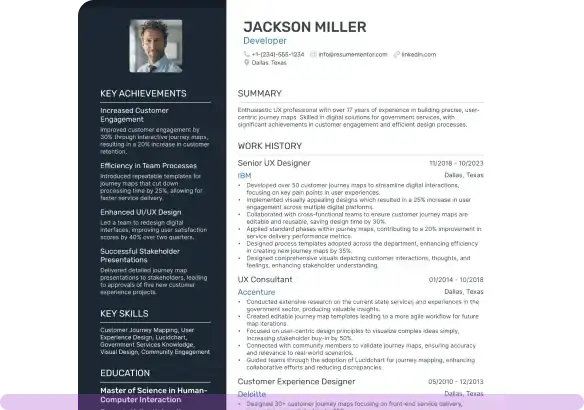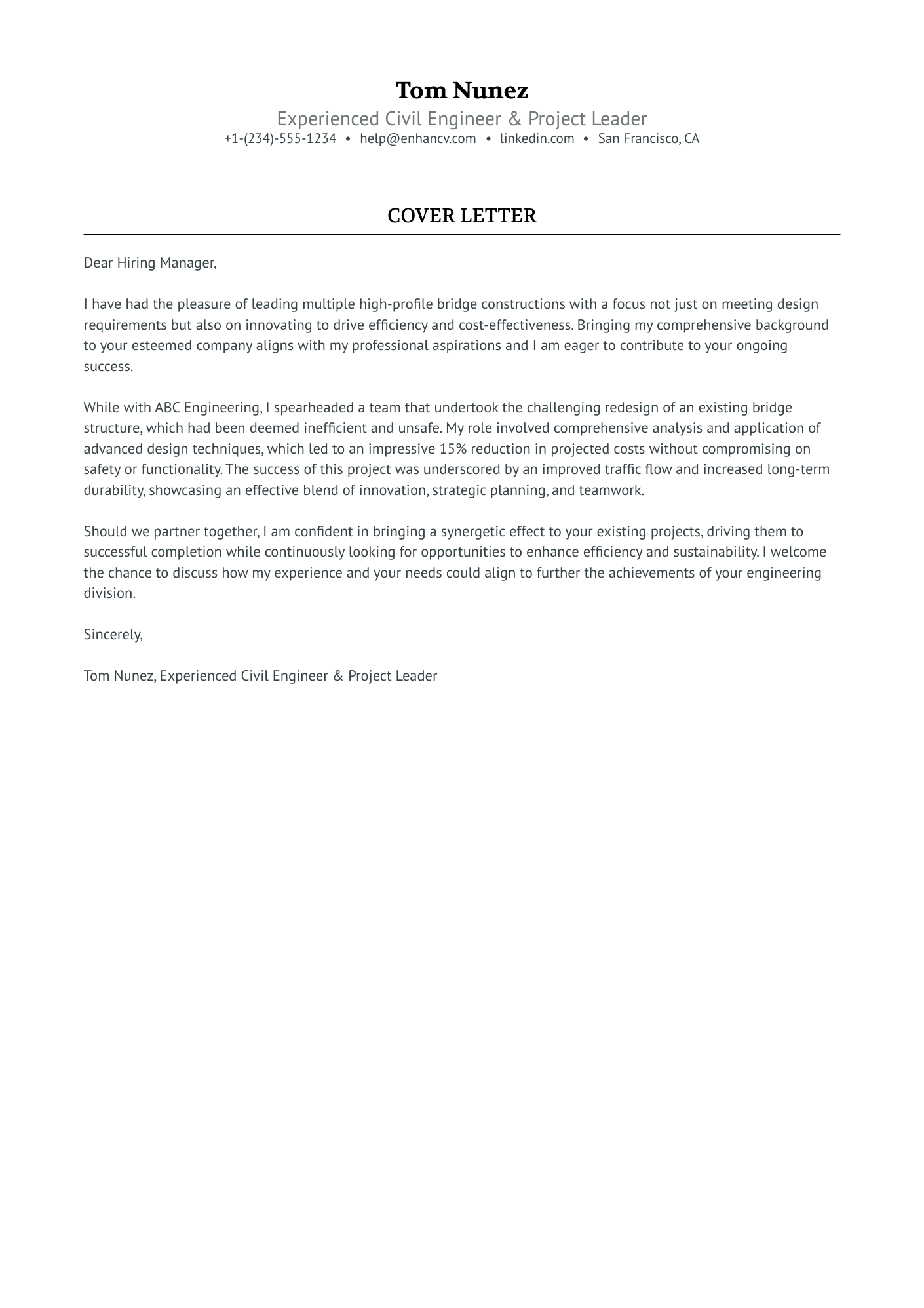How to Write a Great Resume in 2025

Sep 13, 2024
|
12 min read
Learning how to write a resume is the first step to landing your dream job. Need help starting out? Read our guide to find out how to get it right.
Landing your dream job starts with a polished resume. This single document has the power to get you noticed for your professional prowess. However, you don’t have long to make the right first impression. Believe it or not, hiring managers spend just seven seconds reviewing each resume.
Key takeaways
- Learn how to build a resume and gather everything you need in advance.
- Choose the right medium to help you create a flawless resume.
- Select a resume format that showcases your professional prowess.
- Optimize your resume by tailoring it to the company and vacancy.
- Boost your chance of success by following design rules and using a resume template.
- Create an ‘on brand’ cover letter that matches your resume style to complete the package.
Gather your essential information before you start
Before you can put a figurative pen to paper, you need to gather the essentials. It’s important to ensure that you have all of the information in front of you. This will make writing your resume easier.
Let’s take a quick look at what you’ll need:
- Professional details: Double-check your personal information, such as the exact job titles you held, the company names, locations, and dates of employment.
- Education information: You’ll also need details of your education including any certificates and additional training you’ve completed that’s relevant to the job.
- Key skills: Take the time to consider the skills you’ll include on your resume. Remember that the skills you list may change depending on the role and company you’re targeting.
- Optional extras: These may include languages spoken, volunteer work, and professional memberships. In short, anything else that will bolster your application.
Choose what medium to write your resume
Selecting the right medium is the next step in the process. You have a few options to consider when making a resume.
Let’s take a look at the three main choices, plus the pros and cons:
Word processor
Microsoft Word is the old-school way to make a resume. If your device has this software, you can open a new document and create yours from scratch. The processor has a limited range of free resume templates you can use. However, these are rigid and often uninspiring. What’s more, they may not send the right message to the hiring manager since they’ll have likely seen the template before.
Pros:
- Word processors are easy to use for most people.
- The ‘free’ option (so long as you already have the software).
- Updating your resume regularly is straightforward.
Cons:
- Generic templates that the hiring manager may have seen.
- Lack of customization options due to rigid structures.
- The end result looks amateur compared to a professional design.
Online resume builder
Online resume builders are specifically designed to make the process easy. With our tool, effortlessly create a resume that wins over even the most discerning of hiring managers. Choose from a selection of pro-level resume templates and input your career details. Whether you’re looking for a modern, simple, traditional, or creative resume design, you can find just what you need here.
Pros:
- Format your professional resume with total ease
- Wide selection of expertly designed resume templates
- Multiple customization options to create a unique application
- Straightforward updates and modification options
Cons:
- The best resume builder tools cost
Resume writing service
When you’re struggling with how to write a resume, you might turn to an expert. Trusting a professional resume writing service is a popular option. With this approach, you work one-on-one with a writer to create your resume.
Pros:
- Work with an expert resume writer who understands your industry
- Customize your resume according to the role you’re targeting
- Allow a professional to take charge of your next application
Cons:
- Working with a writer can be time-consuming on your part
- Expert resume writers tend to charge high fees
- You have to pay for additional changes making tailoring hard and costly
Decide on the perfect resume format
Now that you understand which medium to use, let’s talk about your resume format. There are three main options to consider here: chronological, functional, or combination (also known as hybrid) resumes.
Which you choose will depend on multiple factors, including your professional stage, how much work experience you have, and whether you’re changing careers.
Here’s a deeper look at each format:
Reverse chronological resume format
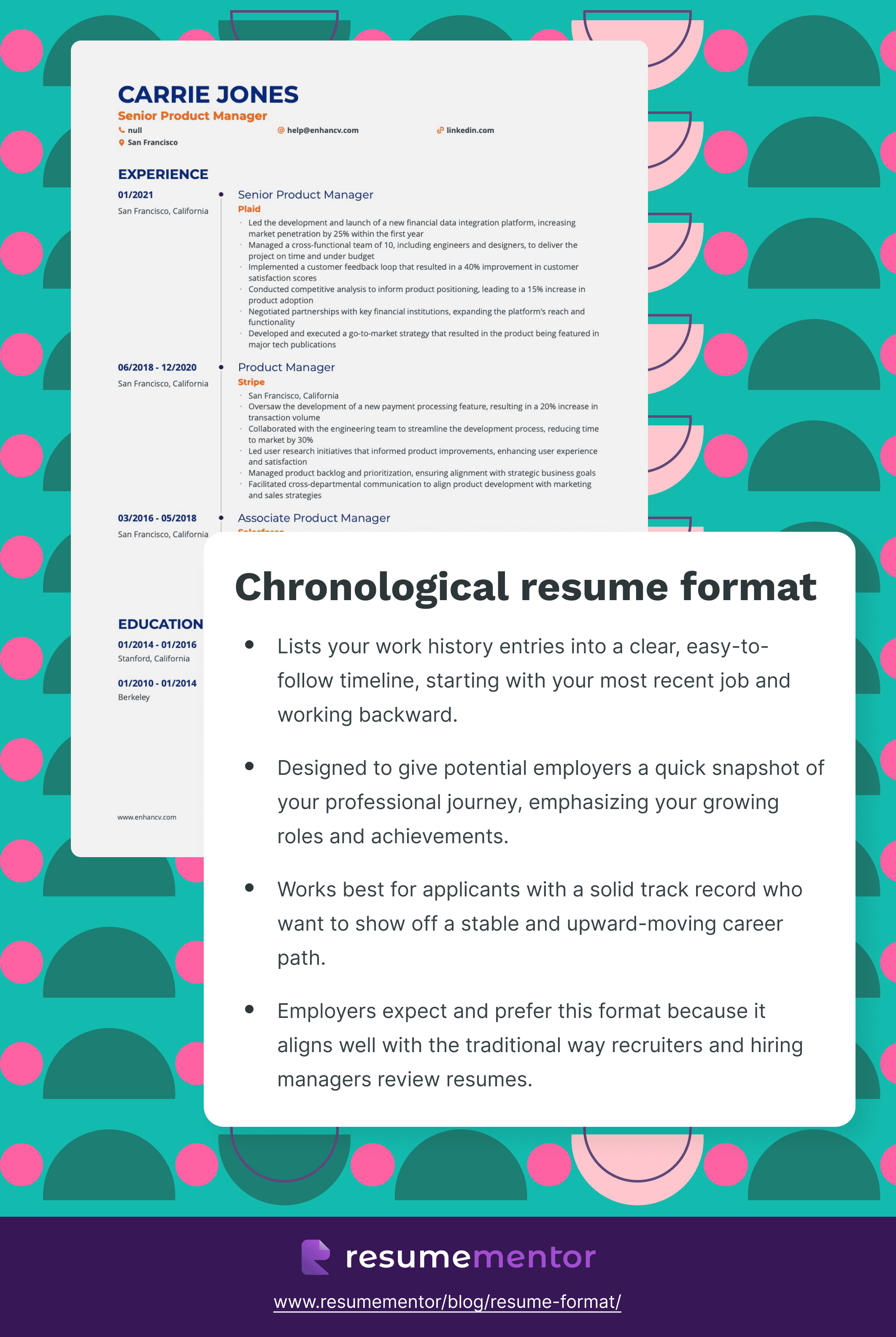
If you have relevant job experience and you’re building a resume, this is the reverse chronological resume format is perfect for you. Also known as the American standard resume format, this structure is what most hiring managers expect. It showcases your work experience—from most recent to least recent—while also covering your education and skills. So, if you’ve been climbing the career ladder steadily, this is the way to go.
Functional resume format
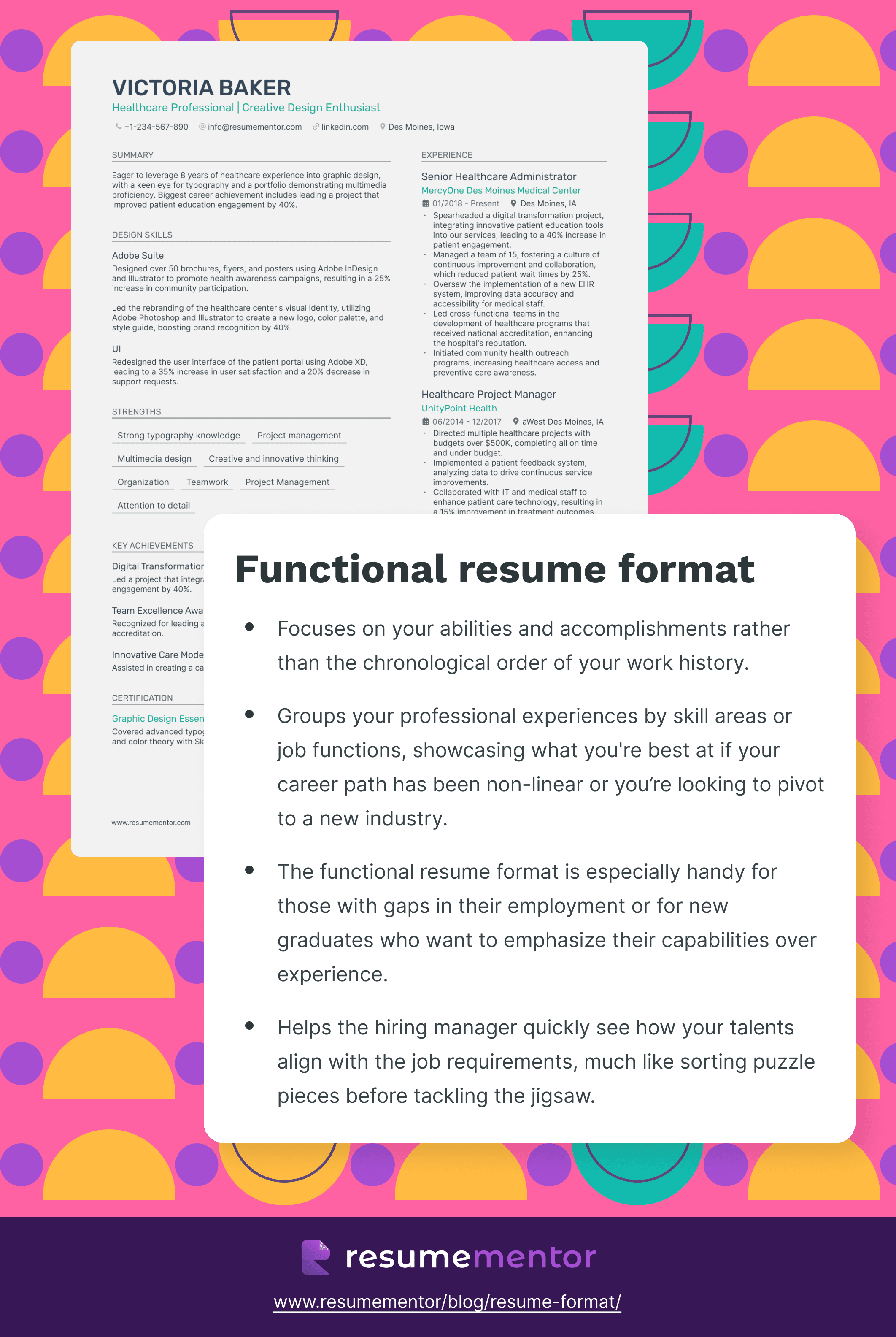
Whether you’re switching industries or lack experience, the functional (or skills-based) resume format is right for you. This approach puts the spotlight on your skill set over your work experience, showcasing the talents that you have above all else. It starts out with your skills grouped. Beneath each skill, you add a bullet point for your corresponding experience.
Combination resume format
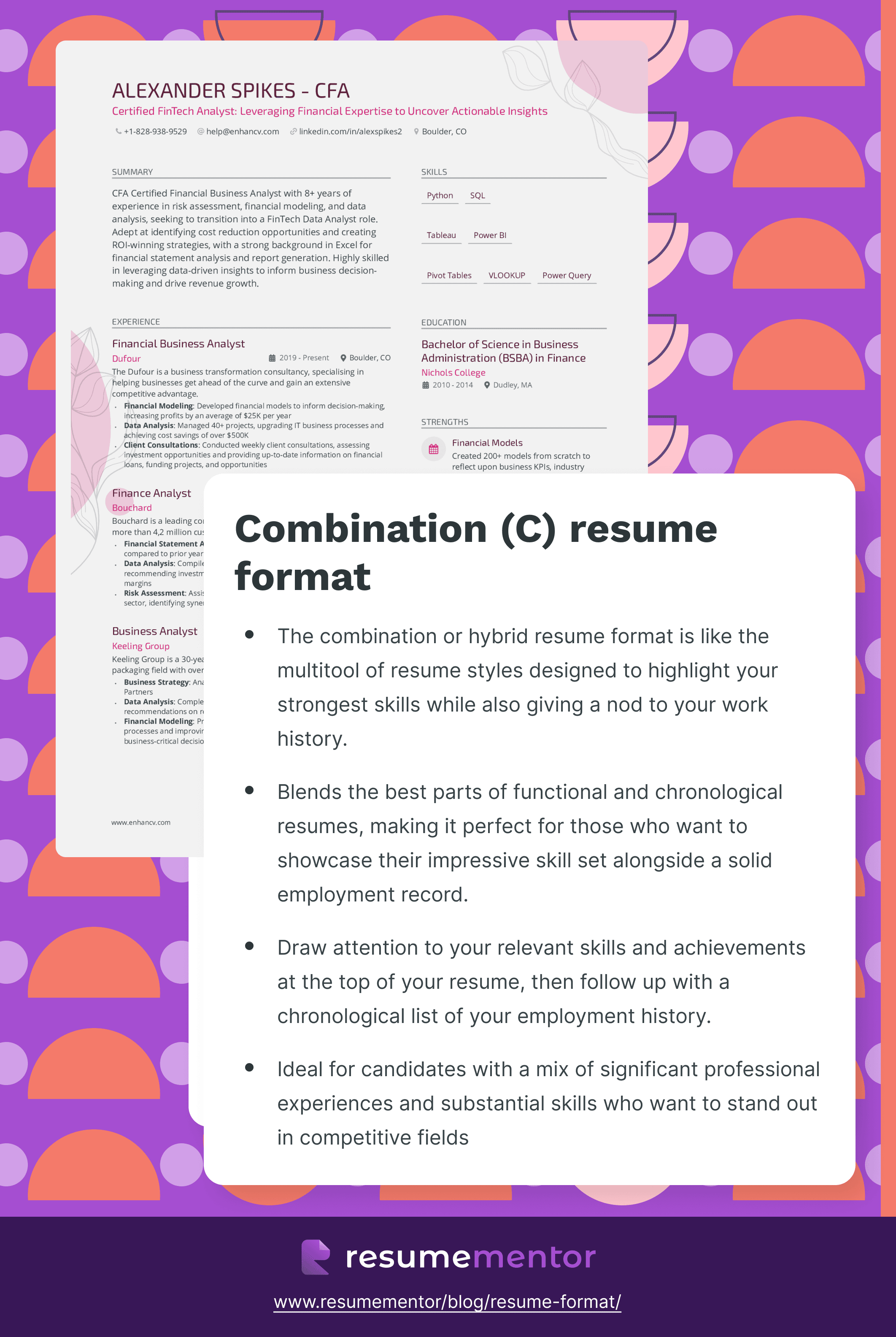
Finally, we recommend the combination (or hybrid) resume format for career changes. As the name suggests, this is a combination of the two other formats, offering you the best of both worlds. The structure boasts both the previously-mentioned skills grouping alongside the reverse-chronological job history.
Create a simple resume structure
Learning how to write a resume is a real art. If it’s been a while since you updated yours, you might not know where to start. The good news is that structuring your resume doesn’t have to be hard.
Let’s take a look at how you can get started with your resume structure:
- Begin with a header: Kick things off with a strong header. This includes your basic contact information and professional links (such as a link to your LinkedIn page, website, or portfolio).
- Include a resume summary or objective: Include a short bio – roughly three sentences – that showcases your unique selling proposition (USP). Tailor this to the job for which you’re applying.
- Organize your work experience: Use the reverse chronological order for this section. Include your key achievements and responsibilities as bullet points.
- List your education, skills, and certifications: You can also add in any additional sections (such as voluntary work and projects) so long as they’re relevant to the role.
Follow the best resume design rules
You don’t have to be a design whiz kid to create a flawless resume. If you don’t have a creative bone in your body, don’t panic.
There are some core rules that you can follow when creating your resume:
- Include white space: Cramming too much information onto your resume is a mistake. We recommend using a 1-inch margin and 1.0 to 1.5 line spacing for a clean, uncluttered look.
- Choose a professional font: Your resume font should be easy to read both on and off-screen. Timeless options include Arial, Calibri, or Times New Roman. Alternatively, you may choose stand-out Google ATS-friendly resume fonts like Rubik, Lato, and Bitter.
- Use consistent font sizes. Your body text should be either 10 or 12 points, while headers can be either 14 or 16 points. Make sure you always use the same size throughout your resume.
- Add plenty of bullet points: Use this structure when listing your role achievements and responsibilities for better visual organization.
- Differentiate sections clearly: Make it obvious where one section ends and another begins. You can do this by incorporating bold headings and subheadings.
- Always follow the same structure: For example, ensure that you use a consistent format when you’re including details, such as dates and job titles.
Always tailor your resume to the vacancy
Using a one-size-fits-all approach is unlikely to wow the hiring manager. Show that you’re truly interested in the vacancy by tailoring your resume to meet its needs.
Here are some ways you can do that:
- Before you get started, make sure you research the company. Review the job description and website to identify the key skills and qualifications they’re seeking.
- Draw attention to the work experience and skills you have that align best with the demands of this vacancy.
- You can enhance the relevance of your resume by including these. They can be found in the original job advert.
- Rewrite your resume summary or objective so that it speaks to the job description. Use this to accentuate the relevant skills and expertise you boast.
Consider Applicant Tracking Systems (ATS)
When writing your resume, you should keep Applicant Tracking Systems (ATS) in mind. This software acts as a sorting system helping recruiters to organize incoming applications.
Here are some tips you can use to tailor your resume to meet the needs of the ATS:
- Flourishes, such as tables, graphics, and imagery may lower your ATS compatibility. Plus, you don’t need them.
- As we’ve already covered, it’s smart to use standard fonts. The software can easily detect these typefaces and ‘read’ your resume.
- Return to the original job posting and look for industry-specific terms. Pepper your resume with these words or phrases naturally.
- You need to ensure that your resume is free from typos and grammatical mistakes.
- Don’t cram your resume with complex words or jargon. As George Orwell put it, “Never use a long word where a short one will do.”
- If available, use an ATS checker to see how your resume scores.
Proofread and edit your resume
Typos and errors make you look unprofessional. Once you’ve written the content of your resume, ensure that you proofread it thoroughly.
You should also take this chance to edit your application, as follows:
- Proofread the content of the document multiple times. Look for spelling, grammar, and punctuation errors.
- Ensure that the formatting, font styles, and sizes are uniform. If these things aren’t consistent, they’ll stand out for the wrong reasons.
- Reach out to a trusted friend, mentor, or professional to review your resume. Let them know that you’re open to constructive feedback.
- Look for ways that you can improve clarity, conciseness, and the overall presentation of your resume.
Remember, it’s always worth checking your resume before you hit ‘send’. Ensuring that there are no silly mistakes will increase your chances of success. Next up, let’s take a look at what you should include.
Add contact information and personal details
Every good resume starts with a header. Much like a business card, this section boasts your basic contact details. You need to ensure that it’s easy to read and up to date.
Here’s what you should include:
- Full name: Include your first name and last name.
- Location: Write your location—i.e. city and state.
- Phone number: List a contact number that you use on a daily basis.
- Email address: Ensure that your address is suitable for work.
- Links: Hyperlink to your portfolio, professional website, or LinkedIn profile.
Don’t make the hiring manager’s job difficult. Display all of the above information clearly for them. Take a look at our resume header example below if you need some inspiration.
When you’ve perfected the header section, it’s time to move on to your resume headline.
Write a captivating resume headline
Resume headlines are short professional descriptions that you place at the top of the document. This sentence summarizes your professional identity. Grab the hiring manager’s attention immediately by quickly sharing your value with them.
Be sure to include:
- Job title: Add the title of the role for which you’re applying.
- Keywords: Include keywords and phrases on your resume found in the job advert.
- Accomplishments: For example, if you’ve gained your Project Management Professional certification, you may use the acronym PMP.
- USP: Your unique selling proposition (USP) or your biggest professional accolade.
Headlines should be concise and catchy. Experiment with a selection of options before you land on the right one. To get your creative juices flowing, take a quick look at our headline example below.
Creative Director | Expert in Brand Strategy & Multi-Platform Campaigns | Led Award-Winning Campaigns for Fortune 500 Brands
Note: You don’t have to over-explain yourself in your headline. You can expand on why you’re the ideal candidate when you write your resume summary or objective.
Write your resume summary or objective statement
Next up, it’s the most free-form part of your resume. However, before you can get started, decide whether to use a resume summary or an objective. These two bios serve distinctly different purposes.
Summaries allow candidates to share their career highlights and express their value. In around three sentences, you should outline your most impressive accolades. When reading your summary, the hiring manager will immediately understand what you bring to the table.
Objectives, on the other hand, express your career goals and motivations. While less popular, these bios can work well for entry-level candidates. You can share your reasoning for choosing a certain industry.
Here’s a checklist of what you should include in your resume summary or objective:
- Title: Start things off with your job title once again.
- Experience level: Include how many years of experience you have.
- Top skills: Add in your most valuable skills, according to the job for which you’re applying.
- Notable accomplishments: You can also include key accomplishments as anecdotes.
- Goals and motivations (optional): If you’re writing an objective, you should also include why you’ve chosen this career path, i.e. where do you see your career going?
If you’re writing a resume summary, look no further. Take a look at our professional example below.
You can also check out our objective statement example here.
The summary or objective whets the hiring manager’s appetite. Once you have their attention, it’s time to shout about the work experience you have.
How to build a work experience section on a resume
Your work experience section is where you tell your career story. To write a good resume, you need to understand which elements to include in this section. As a general rule, you should use a reverse chronological structure—starting with your most recent position and working back in time.
Here are the core pieces of information that you should include:
- Job title: Start by adding the official role title that you held.
- Company and location: Add both the business name and where it’s located.
- Dates of employment: Be precise about when you were employed at the company.
- Accomplishments: List your top accomplishments on your resume as bullet points below the above details.
- Responsibilities: Include the core responsibilities you undertook in this position.
Completing your work experience section is a cinch using the above structure. If you want to know how that looks in practice, take a look at our work experience example below.
- •Spearheaded the design and implementation of a microservices architecture, reducing system downtime by 30%.
- •Mentored a team of 10 junior engineers, fostering a collaborative and innovative work environment.
- •Optimized database queries, resulting in a 40% increase in application performance.
- •Collaborated with cross-functional teams to ensure seamless integration of new features.
- •Implemented responsive design techniques, increasing mobile traffic by 25%.
- •Collaborated with UX/UI designers to enhance the application's interface, leading to a 15% increase in user retention.
- •Automated testing processes, reducing bugs by 20% and improving deployment speed.
- •Assisted in the development of an e-commerce platform, increasing online sales by 15%.
- •Conducted code reviews and provided feedback to ensure adherence to best practices.
- •Debugged and resolved critical issues, improving application stability and user satisfaction.
How much work experience to include on a resume
You don’t have to include every position you’ve ever held. If you’ve had a long, illustrious career, you’ll need to be selective. When writing this section, make sure that every role you include is relevant to your application. Additionally, we recommend only going back 10-15 years on your resume.
How to quantify the impact on my resume
Quantifying the impact you’ve had shows the hiring manager your value.
Here’s how to do it:
- Back up your claims with some evidence, i.e. statistics or numbers.
- Avoid using meaningless statements and pin down the details.
- Don’t merely say what you did—talk about the results you achieved.
How to write a resume experience section when you have none
No experience? Don’t panic. It’s possible to land a job without direct experience.
To give yourself the best shot, make sure that you include the following sections:
- Highlight any experience you do have and look for transferrable skills.
- If you’ve never held a formal job, add in some voluntary work.
- Include any projects you completed either at school or college.
Try a functional format
If you lack work experience, you can use a functional (skills-based) resume format. This structure emphasizes your talents ahead of your work experience.
Resume education tips
What education do you have under your belt? That’s the question that will be on the reader’s mind as they review your resume. Share your educational background with them succinctly. Once again, you can use the reverse chronological order when creating this part of your resume.
Include the following:
- School or college name: List the name of the institute and its location.
- Dates of attendance: Feature the exact dates that you attended the institute.
- Subjects: Include the subjects that you studied and the level, too.
- Grades: Include your GPA on your resume so long as it’s higher than 3.5. If it’s lower than that, you might want to leave it out completely.
Looking for some inspiration? Take a look at our education section example below.
- •Relevant Coursework: Financial Accounting, Auditing, Taxation, Managerial Accounting
- •Honors: Dean’s List (2020, 2021), Accounting Excellence Award (2021)
Resume certification tips
You can also add certifications to this section.You may have gained these while studying, for example, or as part of your professional development.
Showcase them by listing the following details:
- Qualification: Write the exact qualification or certification name.
- Institute: Next, include the institute or provider that awarded you the certificate.
- Date of award: Add in the date that you completed or received this qualification. You should also mention if your certificate has an expiration date.
- Grade: If the certificate was graded, list the final mark you got.
Let’s take a quick look at how you can detail your certificates in our example below.
When you’ve completed your work experience and education sections, you can move on to your skills.
Create a resume skills section to highlight your strengths
The right skills can help you land your dream job. 87% of companies worldwide either have a skills gap or foresee one in the coming years. Differentiate yourself from the competition by highlighting your most valuable talents.
Here’s what you should include in your skills section:
- Hard skills: Also known as technical skills, these apply directly to the position or industry.
- Tools and tech: Include the specific tools or technology you know how to use.
- Transferable skills: These are proficiencies that span industries and are great for career changers or new starters.
- Software: List the software you’re proficient in using.
Your skills section can make you stand out. While you need a balance of hard and soft skills to succeed, the way that you list each of these is different.
Listing hard skills on your resume
When listing hard skills on your resume, you need to be selective. The talents that you choose to share need to speak directly to the hiring manager.
Here’s how you can achieve that:
- Read the job post and see what skills the hiring manager is seeking. Ensure that you list any matching skills you already have.
- If you have a talent that’s currently in high demand, list it now. Consider the skills you have that are rare in your industry.
- Chances are, you have a wide selection of capabilities. However, you should only list hard skills that are relevant to the vacancy.
You can list your skills as bullet points or put them in boxes, depending on the template you use. Be sure to use simple, straightforward language so the hiring manager understands your skill set.
Listing soft skills on your resume
Soft skills are useful in almost any career. Top options include communication, time management, organization, and general interpersonal skills.
Unlike hard skills, you don’t need to list these directly in your skills section. Instead, you should hint at them within the body of your resume. For example, you may illustrate that you have great interpersonal skills when sharing that you collaborated well with a former team.
Although we’ve covered the core resume sections you should include, it doesn’t end there. Boost your chance of landing an interview by adding in some optional elements.
Take advantage of (optional) resume sections
Standing out in a sea of smart applicants is tough. Here at Resume Mentor, we believe that adding optional sections can make or break your application. Show the hiring manager that you have more to offer than they might expect.
Here’s a checklist of additional sections you may include:
- Hobbies and interests: How do you spend your spare time? Adding some of your pastimes gives the hiring manager a unique glimpse into your personality.
- Language skills: Speaking a second language is a massive achievement and can add real value to your application. Include both the language you speak and your proficiency level.
- Volunteering experience: Have you supported a cause or charity? If you’ve volunteered—and it’s relevant—now is the time to shout about it.
- Professional acclaims: Include details of conferences you’ve attended, awards you’ve received, projects you’ve worked on, or publications you’ve been featured in.
- Personal sections: Humanize your application with some color. At Resume Mentor, we have sections like My Time and Favorite Quotes, which help highlight your attitude and personality.
- References: List any professional referees you have, e.g. former managers or mentors.
By this point, you should feel confident in how to write a resume. Simply follow our advice and include the sections we’ve outlined in this guide. Next, let’s look at a way to streamline the whole process.
Want to save time? Use a (free) resume template
Designing a resume from scratch is challenging and time-consuming. Luckily, there’s a straightforward answer. Using a free resume template makes creating a winning application easy.
Here at Resume Mentor, we have a wide selection of options to choose from, as follows:
Modern resume templates
Wowing hiring managers has never been easier. Our selection of modern resume templates is the way to go. These contemporary designs reflect the latest trends in style and structure with an added creative flair. If you’re looking to stand out from the crowd and land the top job, give these templates a whirl.
Simple resume templates
No hassle and no fuss. We have a range of simple resume templates that effortlessly showcase your skills, expertise, and work experience. Make everything crystal clear for the hiring manager in a matter of clicks. When you need a foolproof solution for your professional resume design, look no further.
Traditional resume templates
Professionals in traditional careers may want to kick things up a notch. When you want to target an executive career, it’s worth taking a look at our library of traditional resume templates. Designed to highlight your professional prowess in a classic structure, there’s a whole lot to love here.
Creative resume templates
Should you work in the creative sector, you need to grab the hiring manager’s attention fast. That’s where our creative resume templates come into play. These don’t have to be out of the box to help you succeed. Our selection of designs finds the perfect balance between originality and organized structures.
Examples of how to write a resume for popular jobs
Building a resume is all about tailoring. You need to ensure that your design suits your industry and the vacancy. Fortunately, we have the answer for you. Here are some of the best templates for the most popular jobs:
- Teacher resume examples: Whether you’re a high school, middle school, or elementary teacher, you need a classic resume that fits the bill. Check out our teacher resume examples.
- Registered nurse resume examples: For oncology nurses, school nurses, psych nurses, and every nurse in between, you need a simple design. Here are our nurse resume examples.
- Manager resume examples: No matter what leadership level you hold, it’s important to show off your managerial talents. Find the right approach with our manager resume examples.
- Engineering resume examples: If you have an engineering brain and want to land a highly technical role, you need to get the basics down. Look at our engineering resume examples.
- Doctor resume examples: Since doctors hold esteemed positions, you need a resume that reflects that. Our doctor resumeexamples offer all the advice you need.
- IT resume examples: The technological world is always advancing. Learn how to show off your prowess with one of our IT resume examples.
- Executive resume examples: Are you the head honcho? When you’re targeting a top job, you can’t afford to make mistakes. Check out our executive resume examples.
- Developer resume examples: Crack the code and get the hiring manager’s attention by using one of our well-positioned developer resume examples.
- Banking resume examples: Whatever your banking role, learn how to show off your financial acumen with one of our banking resume examples.
- Retail resume examples: Whether you work in a clothing store or Walmart, ensure that you make the right impression. Take a look at our retail resume examples now.
- Intern resume examples: Ready to kick-start your career? Show the hiring manager that you have what it takes by using our intern resume examples for inspiration.
- Entry-level resume examples: Landing your first job can be hard. Make it a total breeze by checking out our entry-level resume examples before you get started.
- Human resources resume examples: If you work in HR, you know the importance of a good resume. Take a look at our human resources resume examples.
- Lawyer resume examples: When you work in a highly traditional field, you need to target your resume well. Find your exact role in our selection of lawyer resume examples.
- Attorney resume examples: Attorneys need to make their case when applying for new jobs. Use our attorney resume examples to help you get started.
- Data science resume examples: The technological sector is booming. Highlight your expertise quickly with our data science resume examples.
- Machine learning resume examples: Machine learning is set to soar. If you already have this in-demand skill, learn how to emphasize it with our machine learning resume examples.
- Sales resume examples: Can you sell your professional skills to the hiring manager? Use our sales resume examples to find out how.
- Marketing resume examples: A good resume is the most important marketing material there is. Have a look at our range of marketing resume examples now.
- Project management resume examples: Are you a pro at managing projects? Let the hiring manager know all about your skills. Check out our project management resume examples.
- Product management resume examples: Take a look at our wide selection of product management resume examples and get the inside advice you need.
- Finance resume examples: Are you looking for a job in finance? We have you covered with expertly written finance resume examples.
- Accounting resume examples: Perfecting your resume can land you your next job. You do the math. Here are our accounting resume examples.
Create a matching cover letter
A good resume grabs the hiring manager’s attention. However, cover letters have the power to convince the reader that you’re the perfect candidate.
When written correctly and genuinely, your cover letter could be the thing that seals the deal. So, whenever a job posting asks for a cover letter, do add it.
Let’s take a look at a cover letter structure:
- Start by including your basic personal info (your name, location, title, etc.)
- Add a catchy introduction that immediately hooks the reader.
- Convey a compelling career story and explain why this job is the next step in the text body.
- Include a call to action encouraging the reader to get in touch.
- Use a traditional sign-off, such as ‘Sincerely’ or ‘Kind regards’.
Always consider your professional brand. When creating your cover letter, ensure that it matches the design of your resume. You want everything to have a uniform style. If you’re uncertain about where to start, take a quick peek at our cover letter example below.
Ready to get started? Before you begin writing your resume, there are some final things to consider.
Resumes vs CVs—which one to use?
Resumes are the standard application document in the United States. However, if you’re applying for jobs in other places, such as Europe, you should use a CV instead. The main difference between these two documents is the structure, the inclusion of headshots, and the language used.
Should my resume be one page?
We recommend using a one-page resume whenever possible. However, if you hold a senior position and cannot keep your document short, use two pages.
Should I send a resume as a PDF or Word file?
PDFs have a clear advantage over Word files. For one thing, they look more professional, which is a huge bonus. However, they are also uneditable, which means they can’t be tampered with. Always use this format when sending your resume to a company.
Should I optimize my resume for the ATS?
Applicant Tracking Systems (ATS) simply organize incoming resumes for hiring managers. While you should keep the software in mind when building a resume, it’s not the be-all and end-all. Include relevant keywords, where possible, but know that your resume will be read by a real-life human.
Should I use AI to write my resume or cover letter?
We recommend using AI smartly but sparingly. Having a bot write your entire application package is always a mistake. Yes, this makes the process quicker, but you end up with generic content.
At Resume Mentor, we don’t include AI in our builders by design. Frankly, it’s better to think for yourself when creating a professional resume and cover letter.
Conclusion
Follow our guidance when writing your resume and you’ll be off to a great start. It’s not simply about listing your experience and skills. As we have covered here, you need to weave a compelling narrative about your career history. Get started now and use our resume builder to propel you toward success.
Related Articles
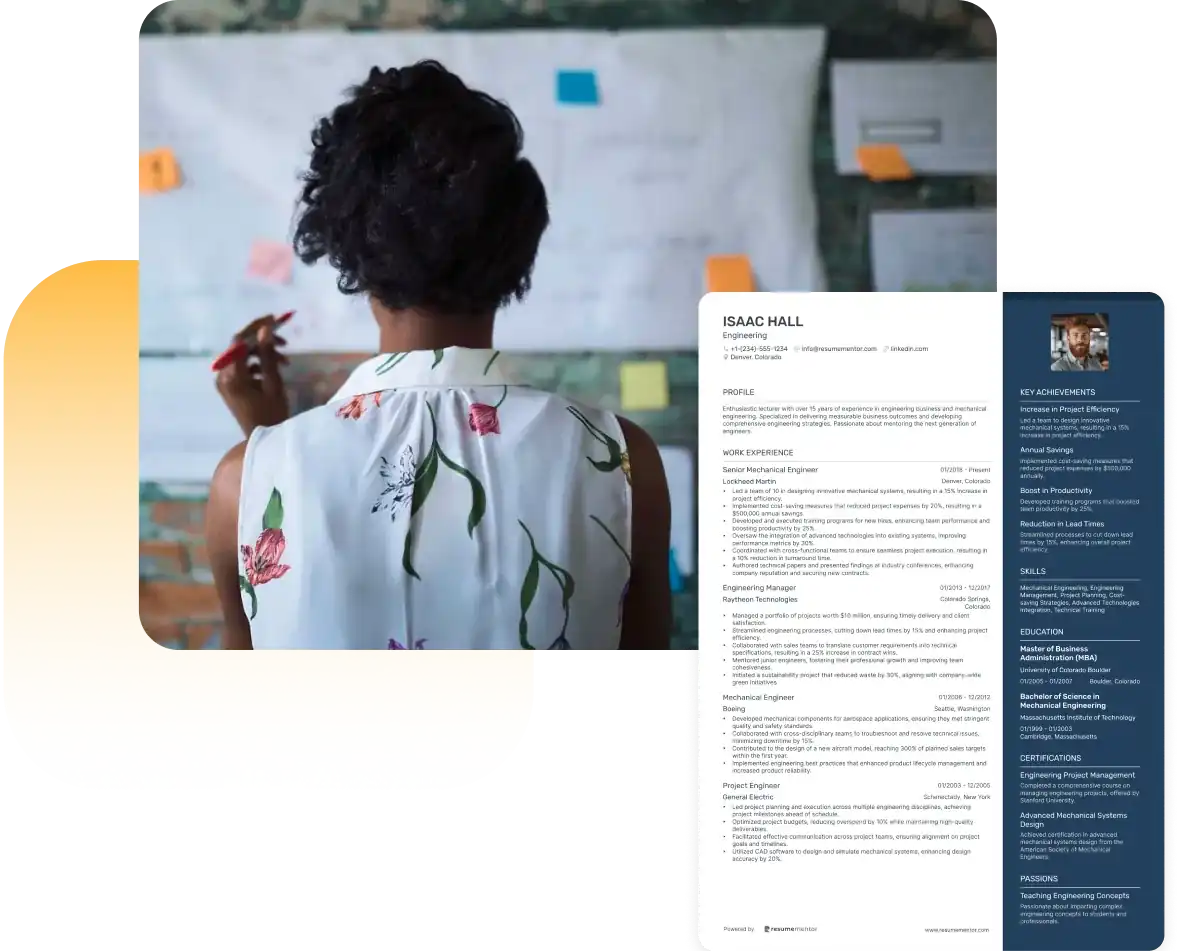
Continue Reading
Check more recommended readings to get the job of your dreams.
Resume
Resources
Tools
© 2025. All rights reserved.
Made with love by people who care.
